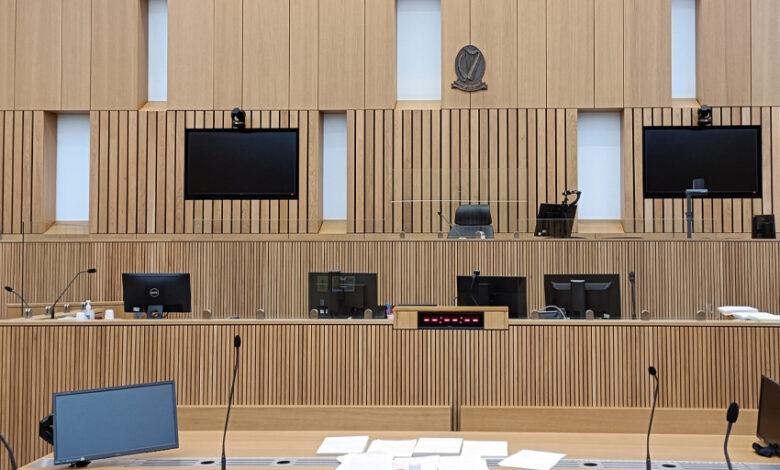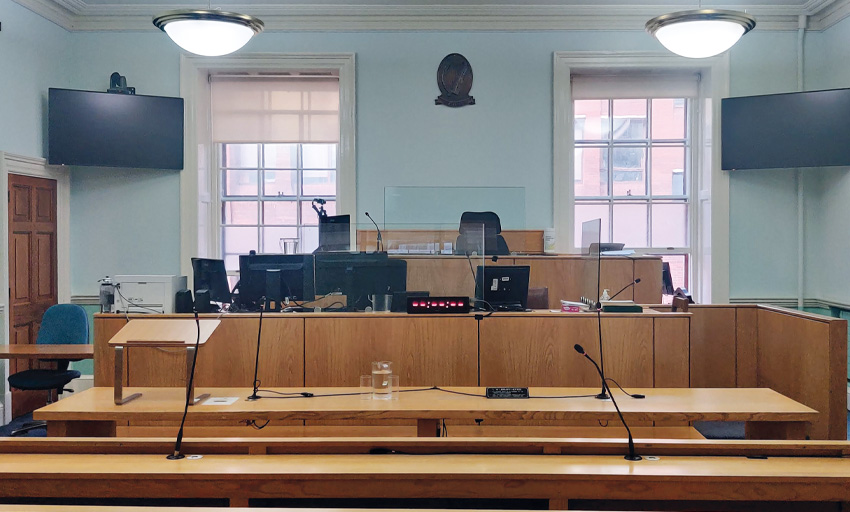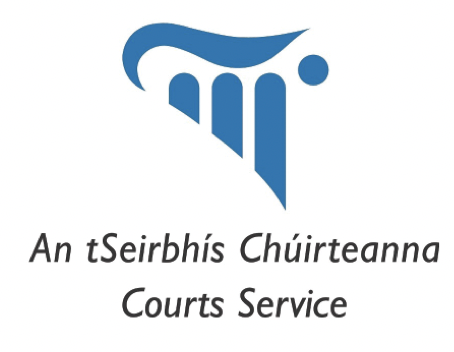Digitising the courts

Two years into its 10-year Modernisation Programme, the Courts Service provide an update on progress so far.
As documented previously across these pages the Courts Service has embarked on a 10-year Modernisation Programme of transformational change which will bring greater efficiencies and modernise how we administer the courts and provide support services to the judiciary and information to the public. From a digital and IT perspective, this means we are focusing on firstly playing catch-up – bringing our systems up to date and secondly rolling out an ambitious IT strategy that will digitise our operations and provide digital options for the services we offer. In 2022, we reached the end of the Transition Phase, the first two years of the Modernisation Programme, as we embark upon the next phase, the Transform Phase with the half-way point in sight, we reflect on what we have achieved so far and the way forward.
In order to achieve our digital ambitions, we needed to start with the basics and last year we transitioned our 1,200 staff to a new digital desktop solution. Our new solution provides the latest Microsoft cloud products to users via laptops and mobile phones – Office, Outlook, Teams, OneDrive, etc. Not only does this solution provide security and reliability from an IT risk perspective it also gives staff the tools to work in a much more connected and collaborative way. The next stage of this process is to provide the judiciary with the same tools and transition to the Microsoft platform. This will allow us to build systems to enable seamless integration across all the work of the courts. This is a carefully managed process and transitioning over 170 judges nationwide will take a number of months.
Equipped with the same standardised and reliable digital tools and technology on a versatile platform such as Microsoft, we can now support consistent digital systems for the future. A longer-term challenge is the modernisation of our case management systems, which over decades have organically grown to over 140 different systems managing various case types, with limited integration. On the Microsoft Power Platform we can now replace our legacy case management systems with a single modern platform capable of offering online services. We have put a lot of work into developing out the building blocks of a unified case management system for the courts and will start deploying this to replace legacy civil systems in the High Court and the family law systems for the Circuit Courts later this year, with others to follow.
Also, the first new process to be built on the new platform is the system which we have developed to support the new procedures introduced with the commencement of the Assisted Decision-Making Capacity Act 2015 and Amended Act 2022 last month. The introduction of this new system, developed for all Circuit Court offices across the country receiving the new ‘capacity applications’ for the appointment of a decision-making representative, is our first case type to be developed on the unified case management system.
These key projects are the start of our move to a single digital first platform, aimed at improving our staff, judiciary, and court user experience. It will give a coherence to the way we operate and how we gather data to support our decision making. From an end-user perspective, this case management system will be capable of supporting electronic filings, payments, order collection, case tracking, and other related services via an online portal.

Digital Jury System
Bringing digital options to our users to make life easier for them is at the centre of the Modernisation Programme. We introduced the option for people who receive jury summons to reply online last November. 42 per cent of replies to jury summons are now received online through this new Digital Jury System.
From mobile phones, laptops, or tablets, people across Ireland are using the new Courts Service online portal to answer the jury summons to follow the status of their reply and to catch real time updates on any changes to their jury service details. The platform allows for 24/7 access to those who have received a summons, providing immediate updates on any changes in times, dates, or jury cancellations, and electronic responses to requests for excusals by the citizen. This new online platform reduces the reliance on paper-based processes, offering an improved customer experience that is inclusive, whilst still providing the option to reply via post if they prefer.
Technology enabled courtrooms
We have increased the number of video technology enabled courtrooms to 123 over the past two years across the country. The technology supports virtual appearances from litigants, legal professionals, expert witnesses, prisoners, and Gardaí dialling-in from remote locations to a physical courtroom with digital evidence display. The continued success of this technology and the options it offers court users were the principal drivers which led to the funding of an additional 54 courtrooms to 2024.
We plan to integrate our unified case management system with our technology enabled courtrooms so that there is more end-to-end visibility of case journeys through the court. This will also support transparency across simple aspects such as where and when is the hearing for my case, whether virtual or physical, as well as improving operational management of courtroom scheduling utilisation.
Data
The Courts process a vast amount of data on any given day. A unified case management system is part of the solution to better managing that data. However, we also recognise that we need to better understand the data we have before we build and transition to a new system. Our new head of data has commenced a number of projects to mine through, sort, organise and define the data across all systems. Improved data will improve how we make decisions and will support the objectives detailed in the Judicial Planning Working Group recommendations, published by then-Minster for Justice Simon Harris TD earlier this year.
Offering digital routes for citizens, adding channels and services is part of our digital first approach. Alongside that approach sits our user-centric goal to design services with users for users. We have engaged extensively with users over the past two years and their feedback has informed the way in which we are designing our digital solutions. In listening to user feedback, we also understand that the existing non-digital service options are important for some users and as a result we will maintain those options as we modernise.

For more information on the Courts Service visit www.courts.ie





